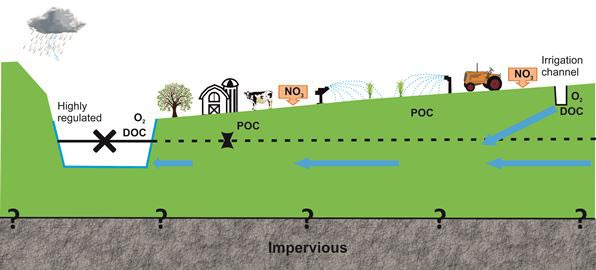
Bodoque J M
University of Castilla-La Mancha, Spain
Title: Restoring hydromorphological functionality to improve natural purification capacity of a heavily modified water body
Biography
Biography: Bodoque J M
Abstract
We determined the natural purification ability of a floodplain where irrigated agriculture is a dominant and hydraulic connection with the associated river is limited. Denitrification activity was characterized by using different methodological approaches based on i) End-Members Mixing Analysis; ii) characterization of macroinvertebrates of the hyporheic zone; iii) analysis of the denitrification potential; iv) analysis of the bacterial community structure; and v) hydrologic modeling. All the approaches, except EMMA analysis, lead to the same conclusion. Denitrification is almost non-existent because the study site does not have the hydric soil and oxygen-limited conditions needed to enable denitrification. Invertebrates did not show statistically significant differences (P-value higher than 0.05) between the diversity indices corresponding to each of the sampling campaigns. However, significant differences (P-value less than 0.01) were found between the piezometers closest to the river banks and the rest; this may be interpreted because of low hydraulic connectivity. Denitrification potential did not show significant statistical differences (P-value less than 0.01) between the sampling campaigns conducted. This shows that besides the absence of connectivity, irrigation is not able to significantly activate denitrification. Additionally, results from the characterization of the bacterial community structure are consistent with floodplains where denitrification is not effective since most bacterial communities are not linked with NO3. Hydrologic modeling showed that decay change is very low, on the order of 0.01 mgN/L.day, although it would improve around 10% if ordinary floods occur. During the summer months theoretical concentrations of nitrates were lower than expected (e.g. ΔNO3 = - 41 in August 2013), according to the EMMA analysis, which might be due to the intensity of irrigation is spatiotemporally variable in the study site. Our results show that floodplain denitrification has been drastically reduced due to the suppression of flood-pulses. In this context, the creation of riverine wetlands where the hydrological regime is restored would lead to a decay of nitrates whose dynamic evolution increases with flooding, as scenarios tested by hydrological modeling have demonstrated.

Figure 1. Conceptual model implemented.

